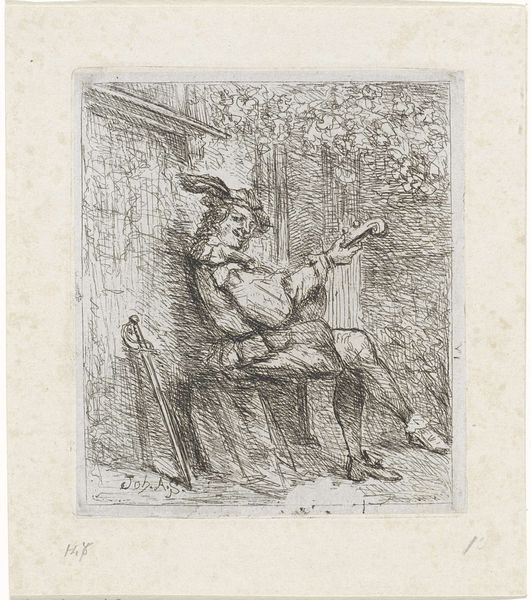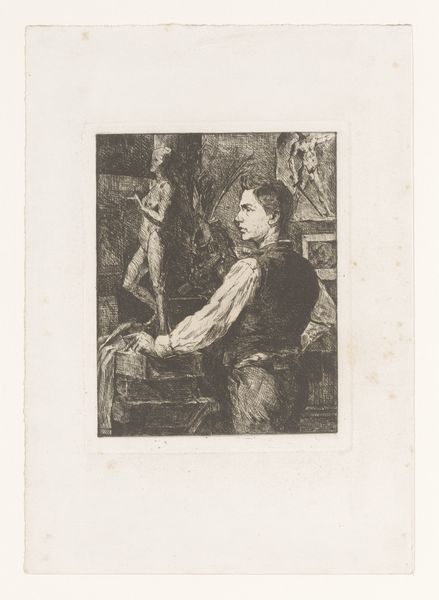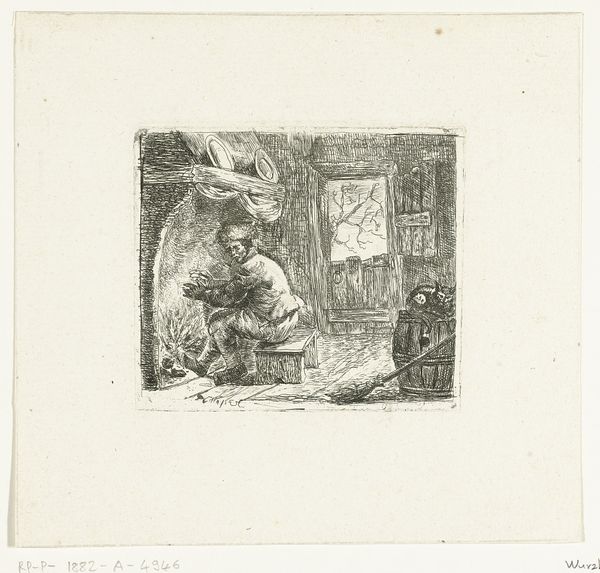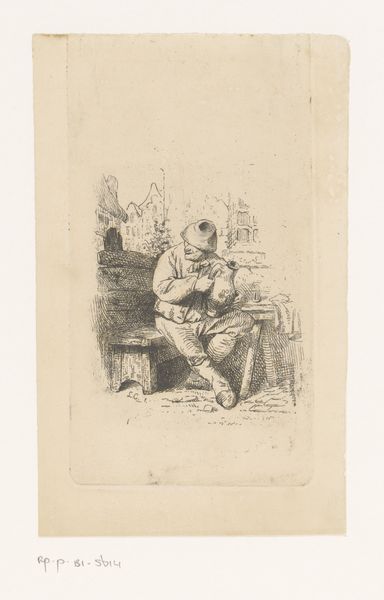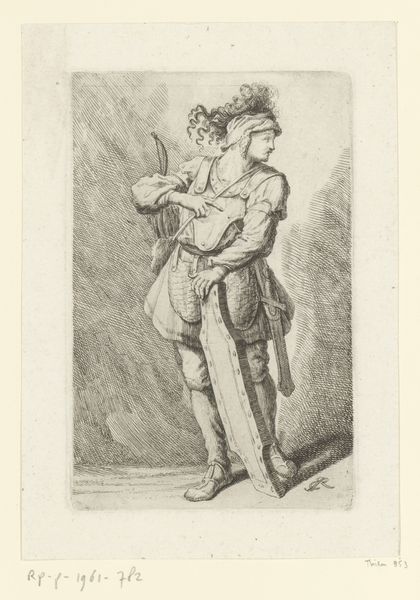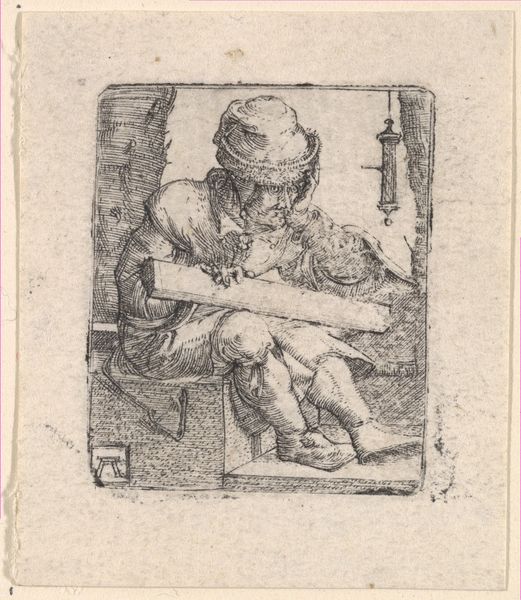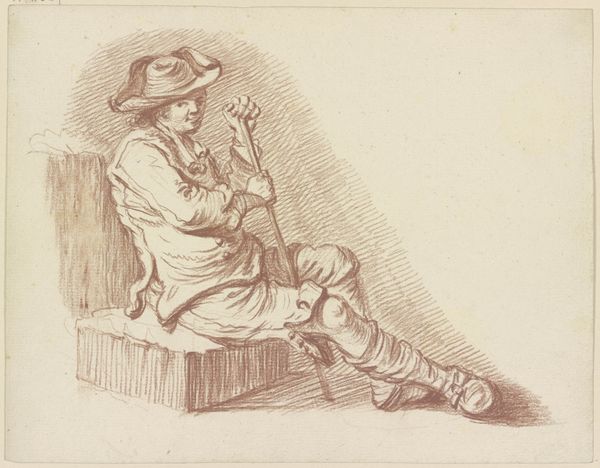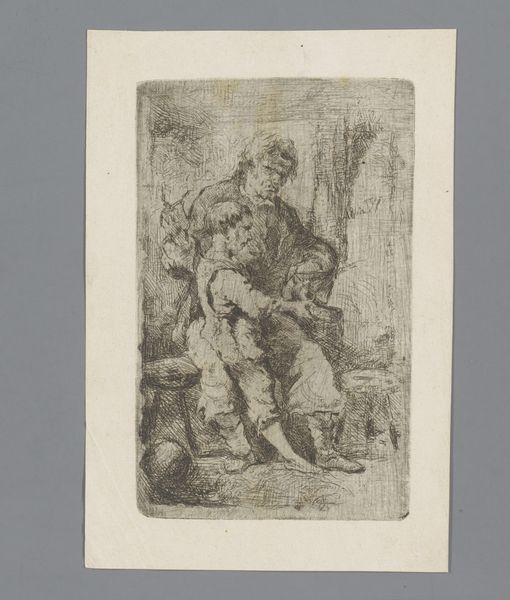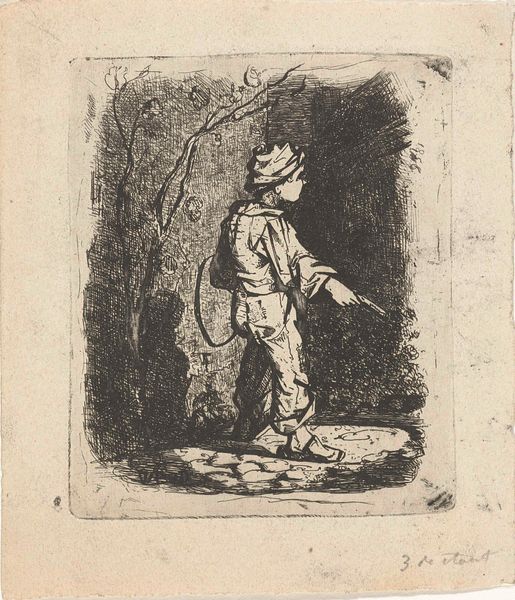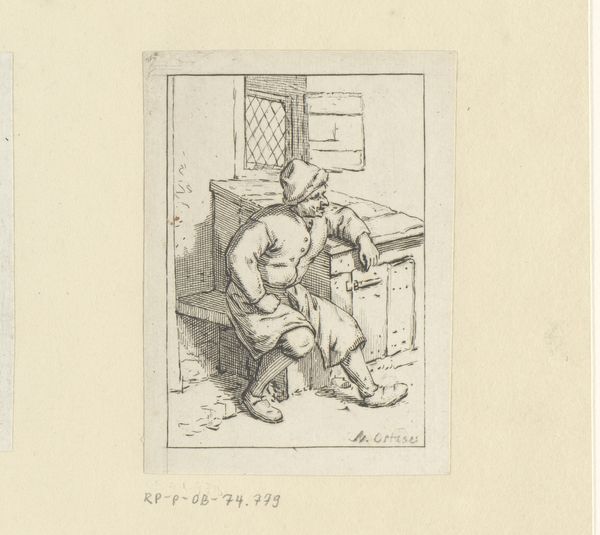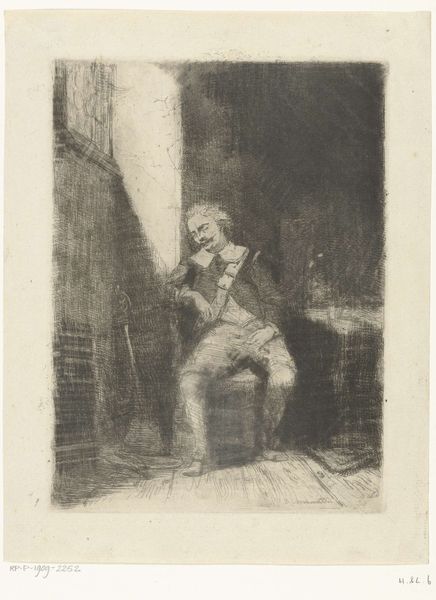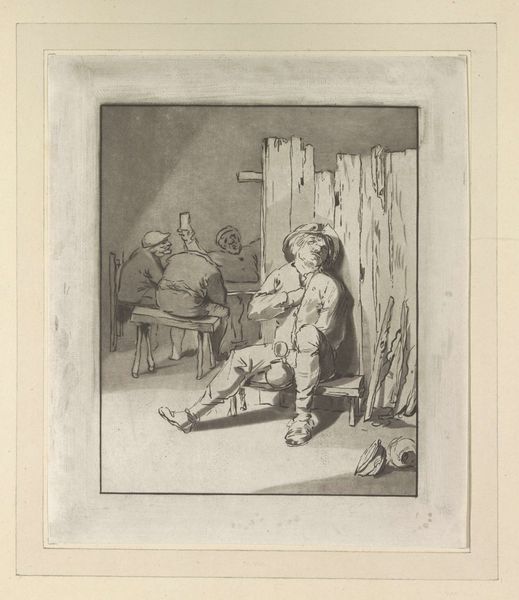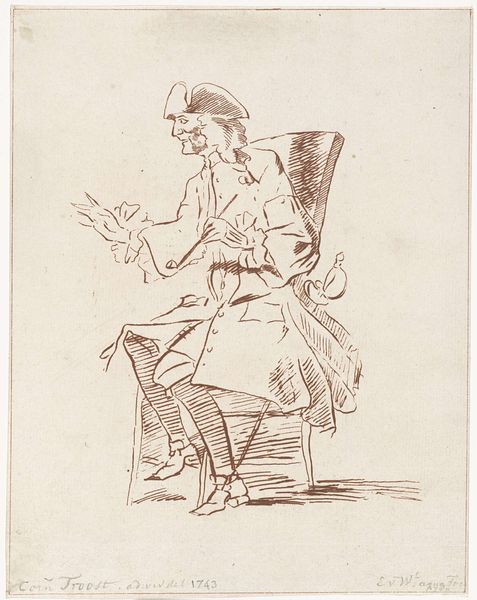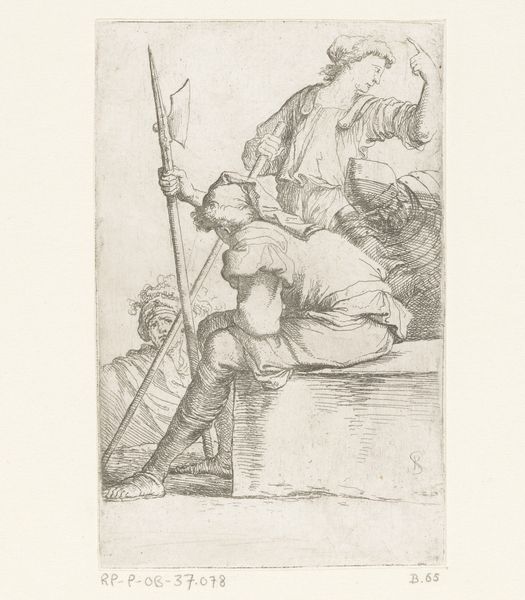
drawing, print, engraving
#
portrait
#
drawing
# print
#
figuration
#
romanticism
#
line
#
genre-painting
#
engraving
Dimensions: height 114 mm, width 100 mm
Copyright: Rijks Museum: Open Domain
Curator: Johannes Adrianus Schultz created this etching, "Man with a Lute," sometime between 1830 and 1863. The artwork has quite a Romantic air. What strikes you about it at first glance? Editor: There's a languidness to it, isn't there? The man's posture, that slightly dreamy expression... even the way the foliage hangs above him feels heavy with mood. It’s a real vibe. Curator: The medium, engraving and print, would suggest it was intended for wider distribution and consumption, beyond the elite art world. We should think about who was producing and viewing these kinds of images at that time. What class of person did the image depict, and which group could purchase a reproduction? Editor: That's fascinating! It completely shifts the focus from artistic expression to accessibility and socio-economic context. Although, maybe that tension, the almost aristocratic pose presented for common consumption, *is* the expression! It makes me wonder if this is simply about accessible beauty or something more pointed. Is it aspiration or satire? Curator: Exactly! Consider the details: The cross-hatching gives volume and depth to the figure. And his flamboyant clothing and elegant instrument, alongside the less refined line work and accessible medium, highlight a tension between artistic intention and social function. Perhaps it democratizes luxury, in a way. Editor: You know, I was so caught up in the romantic feeling that I didn't think much about how the image was produced. That sword lying next to him… Does it have anything to do with democratizing anything, I mean...Is he a soldier, dreaming with his lute? The Romanticism connects, in any case, to emotional, individualistic views of life—and maybe democratized values too? Curator: That tension is really productive. Looking at the broader artistic landscape of the 19th century, and thinking about the methods of reproduction and availability, the print gains further complexity when juxtaposed with Romantic ideals. Editor: So it seems we've managed to get somewhere interesting by weaving together a close reading of his personal disposition *and* an understanding of its production and potential consumption. He looks at the art. We think about how and why. Not a bad pair! Curator: Not at all. The layering of the man's pose with the wider societal implications of print media allows for many future layers.
Comments
No comments
Be the first to comment and join the conversation on the ultimate creative platform.
